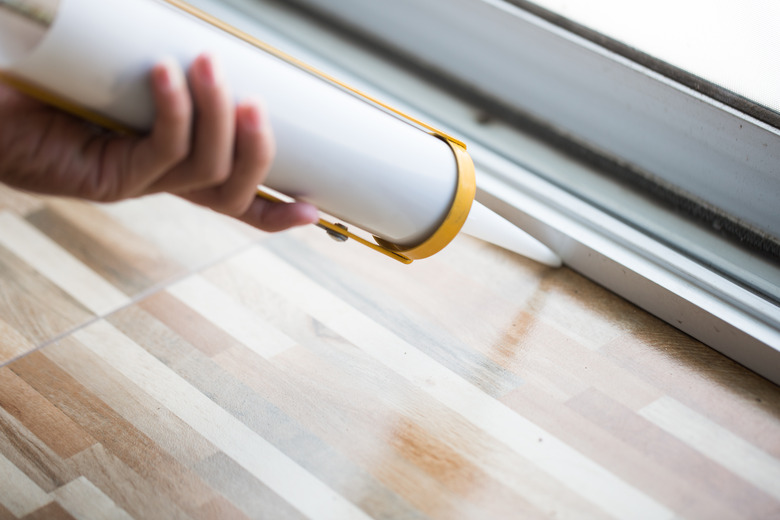The 6 Risks Of Silicone Caulking
We may receive a commission on purchases made from links.
The risks of silicone caulking are fairly minimal, but it's important to know what you're getting when you choose to work with silicone caulk. It's just one type of caulk that's commonly available for home repairs; water-based nonacrylic caulk is the other. Because water-based caulk can be messy to work with and is prone to staining, aging, and mildew, many people prefer working with silicone-based products when recaulking a tub.
Silicone caulk provides a better water-tight seal, but there are a few drawbacks to using it, such as the following:
1. An Unpleasant Odor
1. An Unpleasant Odor
By far the biggest risk of silicone caulking is its odor. This kind of caulk is known to cause dizziness or lightheadedness because of its overpowering smell. It's such a significant drawback that many contractors choose to use a more expensive, odor-free caulk. Typical silicone caulk has an aroma akin to extremely strong vinegar. This odor will dissipate, but it may take at least two days.
2. Dangerous for Kids and Pets
2. Dangerous for Kids and Pets
Like other chemical-based household products, silicone caulk can be harmful if ingested. Kids and pets must be kept away while silicone caulk is being applied and while it's drying.
3. Not Ideal for Porous Surfaces
3. Not Ideal for Porous Surfaces
Silicone caulk does not adhere as well as acrylic-based caulk does to areas that are porous. This is because of its rubber-like flexibility and oil-based formula. Keep in mind that silicone caulk works best when used in an area that requires a good deal of give.
When it comes to filling gaps, consider investing in foam backer rod that fits inside the caulking area. This is a flexible foam tube that works much like insulation by filling the space between the tub and the tile. It is waterproof and keeps you from having to pump a gap full of caulk, thus limiting your exposure to the fumes and saving you money.
4. Not Great for Painting
4. Not Great for Painting
Silicone caulk is made by taking silica sand and transforming it into an oil-based polymer. This is what gives the caulk a great deal of give. This is especially needed in bathtubs that move a good deal, as the average tub with water weighs more than 300 pounds when full. The oil eventually evaporates over the years, but after application, silicone caulk will not take paint.
All of this means that silicone caulk is not appropriate for use in an area that you plan to paint over. If that is your intention, go with a water-based acrylic caulk.
5. Long Drying Time
5. Long Drying Time
Silicone caulk requires a certain degree of moisture in the air to set completely, which means it can take much longer to dry in drier climates than acrylic-based caulk. Prepare to spend an extra day waiting for your caulk to dry if you live in an arid climate.
6. Tough to Remove
6. Tough to Remove
Another of the risks of silicone caulking may not be obvious until years after using it. Removing this kind of caulk can be tough. For old silicone caulk that's proving difficult to remove, a silicone solvent is required.
Silicone solvents generally take between one and six hours to dissolve silicone sealant. Use caution when placing the solvent on silicone as it will dissolve some types of sealant and tubing that are not silicon based. Be sure to test a small area with your solvent before applying it and read the manufacturer's directions carefully.
